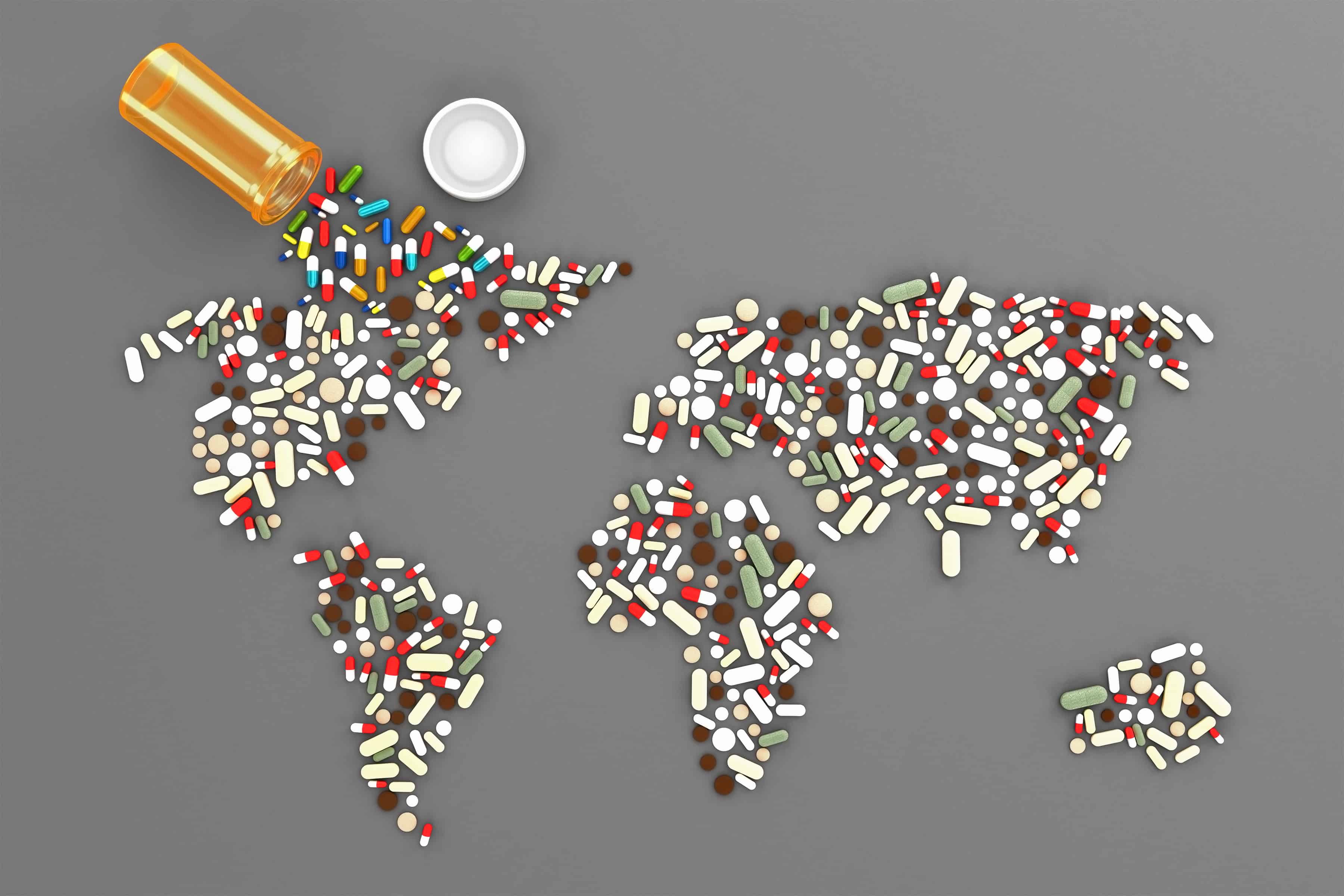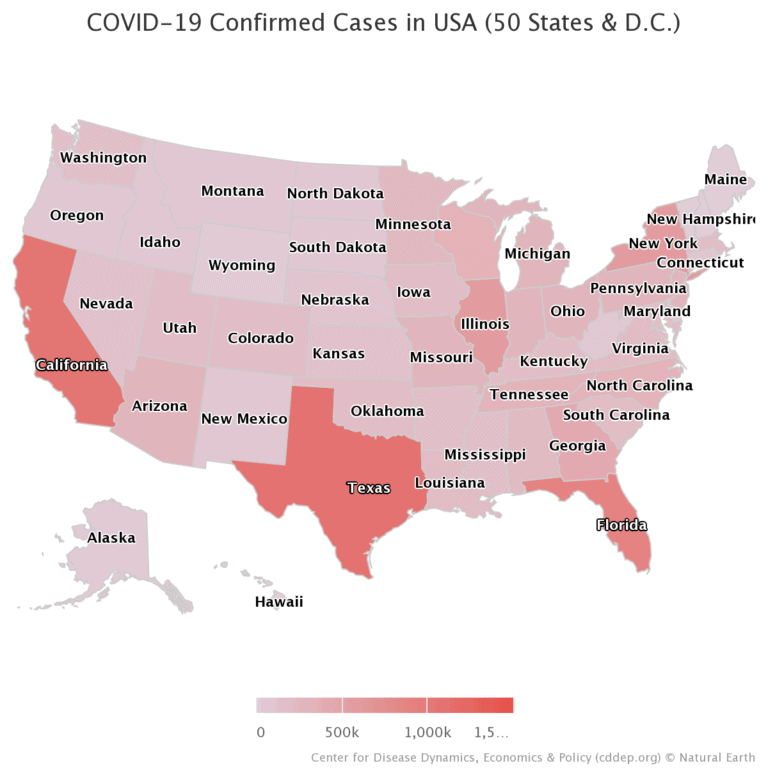November 23, 2020
COVID-19
Pfizer and BioNTech conclude phase 3 study of COVID-19 vaccine candidate. In a press release, Pfizer and BioNTech announced the conclusion of their phase 3 study (NCT04368728) on the mRNA vaccine candidate BNT162b2, revealing an efficacy rate of 95% (p<0.0001). The study recruited over 43,000 participants globally and in the US, with racially and ethnically diverse backgrounds and of different age groups; 41% of global and 45% of U.S. participants were 56-85 years of age. Overall, 170 confirmed cases of COVID-19 were evaluated, with 162 observed in the placebo group versus 8 in the vaccine group. The well-tolerated vaccine candidate, with an efficacy of over 94% in adults over 65 years of age, is expected to reach up to 50 million people in 2020. [BioNTech]
Mobility network models of COVID-19 explain inequities and inform reopening. Researchers used a SEIR model integrating mobility networks to simulate COVID-19 transmission in 10 large metropolitan statistical areas of the United States. Movement from census block groups (CBGs) to points of interest (POIs) (e.g., grocery stores, restaurants, etc.) was tracked using cellphone geolocation data from March – May 2020. The model predicted that capping POI occupancy reduced risk substantially, compared to restricting mobility. Using US census data, researchers showed that higher infection rates in disadvantaged racial and socioeconomic groups could be explained by mobility alone, rather than differences in pre-existing conditions, with simulation outcomes corresponding to observed data. Lower income CBGs were not able to reduce mobility to the same extent as higher income CBGs (most likely because more individuals were unable to work from home), and the POIs they visited were more crowded. The authors concluded that policy measures, including caps on POI occupancy, emergency food distribution, free testing, income support, and improved workplace infection prevention for essential workers, can mitigate health inequities by reducing transmission in high-risk neighborhoods. [Nature]
Gender differences in COVID-19 related attitudes and behavior: Evidence from a panel survey in eight OECD countries. A working paper from Harvard Business School found substantial gender differences in the perceived seriousness of COVID-19, support for restrictions to contain the pandemic, self-reported compliance with social distancing, contact, and hygiene measures to combat spread of the disease. Researchers collected data from 21,649 respondents in eight OECD countries in two rounds: one in March and one in April 2020. After controlling for relevant factors, women were significantly more likely than men to support restrictions on public activity and commerce and to report compliance with recommended actions such as handwashing and avoiding gatherings. These differences were not driven by social desirability bias. As men have reported more COVID-19 cases, severe cases, and deaths than women, these findings may help determine why gender-based differences in COVID-19 infection persist. [Working Knowledge]
Hospital-Acquired SARS-CoV-2 Infection: Lessons for public health. Early data from the beginning of the COVID-19 pandemic revealed that hospitals were important sources for disease transmission, leading to great reductions in elective hospital visits. However, growing evidence on the effectiveness of universal surgical mask use by both healthcare workers and patients consistently indicates that hospital transmission of SARS-CoV-2 in the setting of universal masking is likely rare. Experts suggest that detailed studies on hospital transmission are necessary, in order to understand systemic failures that might allow transmission. Additionally, they emphasize the importance of public health messaging conveying that hospitals with well-implemented universal masking policies are safe, and that patients should not avoid urgent health care. [JAMA]
Drug Resistance and Global Health
The role  of “spillover” in antibiotic resistance. The association between antibiotic use and resistance is confounded by “spillover”, the spread from person to person. Researchers used mathematical modeling to investigate the role of spillover at the population level and found that even 1% of interactions between populations could have large consequences in terms of spillover of antibiotic resistance. Furthermore, analysis of antibiotic use and resistance data from US states and European countries for three pathogen–antibiotic combinations, revealed that increased interactions between populations were associated with smaller differences in antibiotic resistance between those populations. The findings support the notion that antibiotic resistance is not a localized problem and highlight the role of spillover in predicting its future. [PNAS]
of “spillover” in antibiotic resistance. The association between antibiotic use and resistance is confounded by “spillover”, the spread from person to person. Researchers used mathematical modeling to investigate the role of spillover at the population level and found that even 1% of interactions between populations could have large consequences in terms of spillover of antibiotic resistance. Furthermore, analysis of antibiotic use and resistance data from US states and European countries for three pathogen–antibiotic combinations, revealed that increased interactions between populations were associated with smaller differences in antibiotic resistance between those populations. The findings support the notion that antibiotic resistance is not a localized problem and highlight the role of spillover in predicting its future. [PNAS]
Antibiotic resistance with mass azithromycin distribution. Mass distribution of azithromycin to preschool children twice yearly for 2 years has been shown to reduce childhood mortality in sub-Saharan Africa. A cluster-randomized trial in Niger, involving 30 randomly selected communities, investigated the effects of mass distribution of azithromycin on antibiotic resistance. The study revealed an increase in macrolide resistance in the group receiving azithromycin as compared to that receiving placebo; the determinants of macrolide resistance were 7.4 times higher (95% CI, 4.0 to 16.7) at 36 months and 7.5 higher (95% CI, 3.8 to 23.1) at 48 months. The authors concluded that while repeated mass azithromycin distributions have beneficial effects, the potential for the propagation of nonmacrolide- and macrolide-resistance genes to areas in which the population has not been treated with azithromycin should be carefully considered. [NEJM]
Antibiotic use prior to seeking medical care in patients with persistent fever: a cross-sectional study in four low- and middle-income countries. The Neglected Infectious Diseases DIAGnosis (NIDIAG)-Fever study investigated etiologies of infections in patients with persistent fever admitted to hospitals in four LMIC (NCT01766830), in order to asses any associations with antibiotic use prior to seeking medical care. Approximately 22% of the 1039 participants reported prior use of more than one antibiotic, ranging from 6.3% in, Cambodia to 35.5% in, Nepal. Additionally, the most frequently used antibiotics were those in the Watch group (351, 64.4%), ranging from 23.6% in the Democratic Republic of Congo to 82.1% in Nepal. No association was found between antibiotic use and clinical presentation, implying that antibiotic use was based on availability rather than presenting syndrome, emphasizing the need to monitor and optimize community- or primary healthcare-level antibiotic use in LMICs. [Clinical Microbiology and Infection].
Racial and ethnic disparities in hospital observation in Maryland. Researchers at Johns Hopkins University, Massachusetts General Hospital, and CDDEP conducted a retrospective analysis of Emergency Departments (ED) across 46 Maryland hospitals to explore the relationship between self-reported race and initial ED status assignment (observation versus inpatient admission). They used mixed-effects logistic regression models, controlling for diagnosis, clinical severity, and comorbidities, and found that black and Hispanic adults were significantly more likely to be assigned to observation than white, non-Hispanic patients (OR 1.19; 95%CI 1.16 to 1.23 for black patients and OR 1.11; 95%CI 1.01 to 1.21 for Hispanic patients). Status assignments were often incorrect with over 20% of observation stays lasting more than 48 hours. As evidence shows, patients assigned to observation experience more severe financial consequences and less access to post-discharge treatment; inequities in assignment status negatively impact long-term health outcomes of minority populations and further exacerbate existing health disparities. [The American Journal of Emergency Medicine]
COVID-19 impact on dental antibiotic prescribing across England. A study assessing trends in antibiotic use in England between July 2018 and July 2020, based on data from National Health Service (NHS) dental prescriptions, revealed that antibiotic prescribing increased as dental practices were restricted to providing only remote management of patients. The amount of antibiotics dispensed from local pharmacies in April to July 2020 was 25% higher than April to July 2019, with a peak in June 2020. While the rate of antibiotic prescribing differed across regions in England, it was a characterized by an upward trend, warranting adaptation measures to allow access to high-quality urgent dental care and avoid unnecessary dental antibiotic prescribing. [Nature]
Photo: Shutterstock













